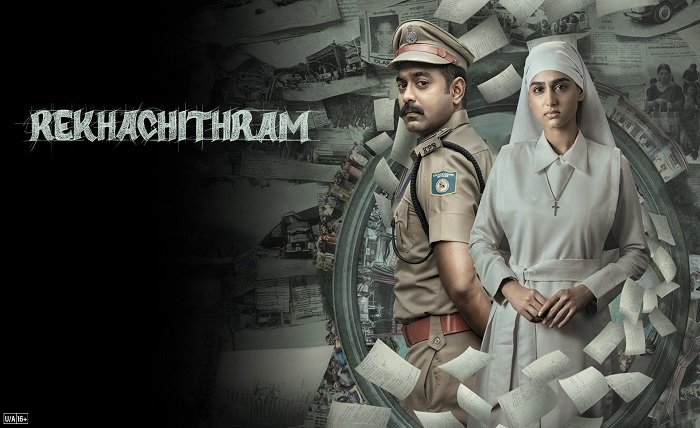Rekhachithram: Unraveling the Timeless Art of Line Drawings in Indian Culture

What is Rekhachithram and Its Cultural Significance?
Rekhachithram is a traditional Indian art form that emphasizes the use of simple, flowing lines to convey deep stories and spiritual symbols. Derived from the Sanskrit word “rekha” meaning line and “chithram” meaning picture, rekhachithram has been a part of Indian temple art, manuscripts, and mural traditions for centuries. The elegance of rekhachithram lies in its minimalism, where a single stroke can express an emotion or an entire scene, embodying the ancient Indian philosophy of beauty in simplicity.
In many parts of India, especially in Kerala and Tamil Nadu, rekhachithram is associated with temple rituals and religious scripts. Rekhachithram continues to inspire modern illustrators and digital artists who seek to combine heritage with innovation.
Origins and Historical Evolution of Rekhachithram
The history of rekhachithram can be traced back to ancient palm leaf manuscripts and mural paintings in Indian temples. Rekhachithram was often used to depict mythological narratives, divine figures, and epic tales such as the Ramayana and Mahabharata. Unlike other intricate art forms, rekhachithram maintained a linear elegance, focusing on clean outlines and symbolic patterns.
Throughout history, rekhachithram evolved from mere illustrations in scriptures to standalone visual art on walls, scrolls, and later canvas. In traditional schools of Indian art such as the Kerala mural tradition, rekhachithram held a unique place for its power to communicate without overwhelming detail.
The Technique and Tools Behind Rekhachithram
Creating rekhachithram requires a deep understanding of line dynamics, balance, and rhythm. Artists traditionally used natural ink and bamboo pens to craft each rekhachithram with precision. Every line in rekhachithram must flow organically, with varying pressure to produce thickness, elegance, and meaning.
Modern artists who practice rekhachithram sometimes use fountain pens, digital tablets, or fine liners, but the essence of the art remains unchanged. Rekhachithram requires immense patience, as even the slightest deviation in stroke can alter the emotional tone of the artwork. Practitioners often meditate or chant before drawing rekhachithram to ensure that their mind is in sync with the purity of the line.
Rekhachithram in Temple Art and Religious Expression
Rekhachithram has been extensively used in temple carvings, wall paintings, and ceremonial documents. In many South Indian temples, rekhachithram is found etched into stone, wood, or bronze, portraying deities and celestial beings with divine grace. Rekhachithram also finds place in sacred yantras and mandalas, where symmetry and flow are considered spiritual necessities.
This spiritual role of rekhachithram is evident in its inclusion in rituals like Pradakshina (circumambulation) or in temple flags and ceremonial parasols. Rekhachithram, when combined with mantras and symbols, is believed to invoke divine energies, making it more than an art – a conduit of devotion and transcendence.
Modern Interpretations and Revival of Rekhachithram
With a renewed interest in heritage arts, rekhachithram is witnessing a revival among modern artists and designers. Graphic illustrators, tattoo artists, and digital designers are now exploring rekhachithram for its clean aesthetics and powerful symbolism. In fashion, you’ll find rekhachithram-inspired prints on sarees, kurtas, and scarves, connecting the past to the present.
Educational platforms and art workshops are now teaching rekhachithram as a subject of study, blending traditional techniques with modern tools. This has also led to global recognition of rekhachithram as not just an Indian cultural element but as a unique form of minimalist expression.
Learning and Practicing Rekhachithram Today
If you’re interested in learning rekhachithram, there are numerous online and offline resources available. Many traditional art schools and Gurukulams offer rekhachithram courses focusing on discipline, pen control, and spiritual understanding. Learning rekhachithram is more than acquiring drawing skills – it’s about tuning into your inner self and practicing mindfulness.
Beginners in rekhachithram often start by copying ancient motifs and symbols before developing their own style. With consistency and practice, rekhachithram can become a deeply meditative and expressive hobby. You can even use rekhachithram to illustrate your journals, design mandalas, or decorate spaces with culturally rich motifs.
Why Rekhachithram is Relevant in a Digital World
In a fast-paced digital age, rekhachithram offers a breath of calm and reflection. As more creators seek meaningful visual storytelling, rekhachithram stands out for its purity, cultural depth, and emotional resonance. Platforms like Instagram and Pinterest have entire communities dedicated to rekhachithram illustrations, animations, and reinterpretations.
The minimalist nature of rekhachithram aligns perfectly with the aesthetics of mobile apps, UI design, logos, and branding. By incorporating rekhachithram in contemporary designs, brands and individuals create a unique identity that pays homage to Indian heritage while being visually timeless.
Conclusion
Rekhachithram is more than a drawing technique – it’s a spiritual journey expressed through lines. From its sacred origins in temples to its modern-day revival in digital design, rekhachithram continues to be a living expression of India’s artistic soul. Whether you’re an artist, a designer, or someone seeking mindfulness through creativity, rekhachithram invites you to explore the power of simplicity, tradition, and storytelling – all through the graceful language of lines.
FAQs
Q1. What does the word “rekhachithram” mean?
Rekhachithram comes from Sanskrit where “rekha” means line and “chithram” means picture, referring to art created using continuous lines.
Q2. Where is rekhachithram commonly practiced?
Rekhachithram is especially prominent in South India, notably Kerala and Tamil Nadu, in temple art and classical manuscripts.
Q3. What tools are traditionally used for rekhachithram?
Traditional rekhachithram is created using bamboo pens and natural inks, though modern versions may use digital tools or fine liners.
Q4. Is rekhachithram used in digital art today?
Yes, rekhachithram has found a place in digital illustration, UI design, and branding due to its clean lines and minimalist appeal.
Q5. How can one learn rekhachithram?
You can learn rekhachithram through online tutorials, art classes, or workshops focused on Indian heritage art and mindful drawing.





